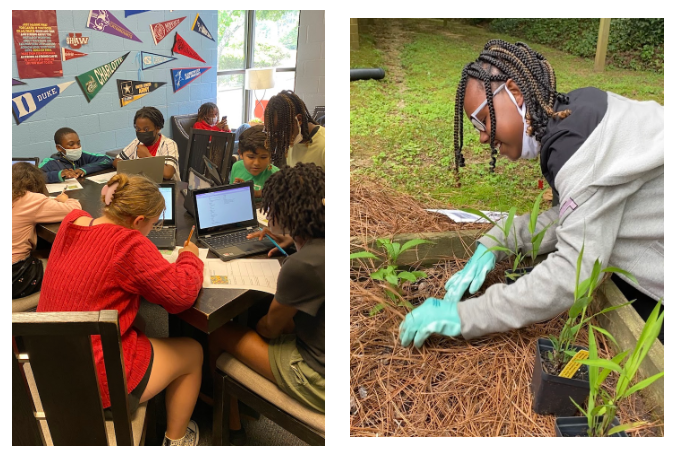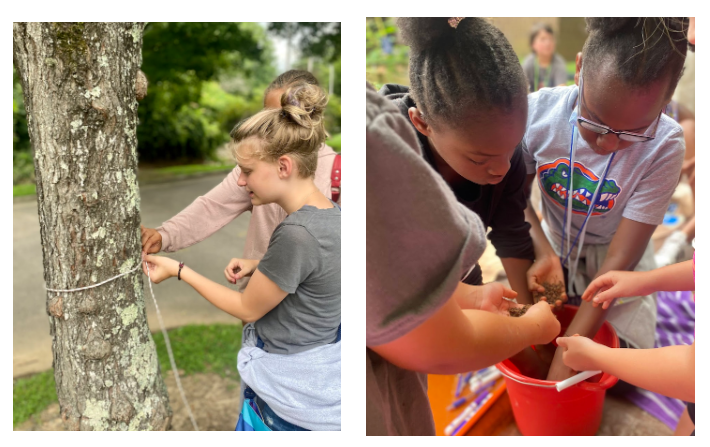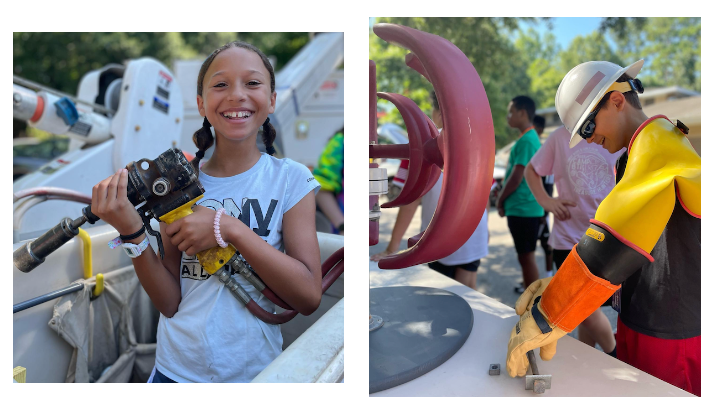Sound a bit like a sneaky math lesson? It was! Ultimate Journey was designed by Boys & Girls Club of America (BGCA) and the National Park Service (NPS) to support national STEM standards. Collecting and analyzing data, creating models, calculating ratios, coming up with good guesses (also known as hypotheses)–these are some of the skills built into the fun.
“Ultimate Journey is a well-established BGCA program,” said Emily Pelliccia, youth development professional at the Wake Forest Club. “But we’ve not always had the staff to take it on. We’re really glad the Neuse River Hawks and NCWF volunteered to get it going.”
Our summer sessions helped members understand how the different components of the Club’s ecological address fit together. Those oaks around our campus? They’re well-adapted to our soils, which members found to be slightly acidic and rich in clay. The birds singing in our trees and shrubs? They thrive because they’re plucking insects and red mulberries from our native plants.
Back at Falls Lake, NC state parks environmental educator Jennifer Browndorf explained how this concept applies in an aquatic environment. “We survey invertebrates because they’re indicators of the lake’s health,” she said. Plentiful biodiversity at this level means nourishment for species further up the food chain, like fish, reptiles and birds.







